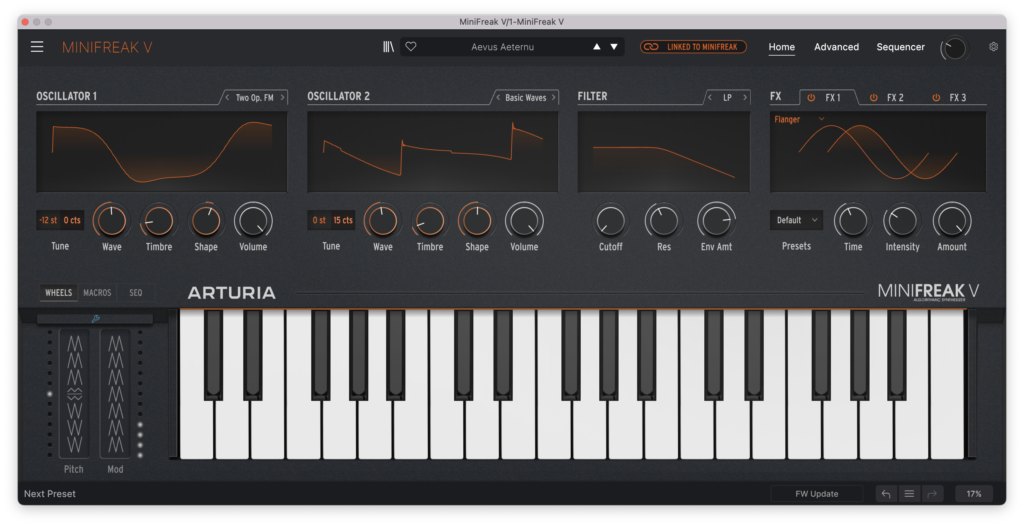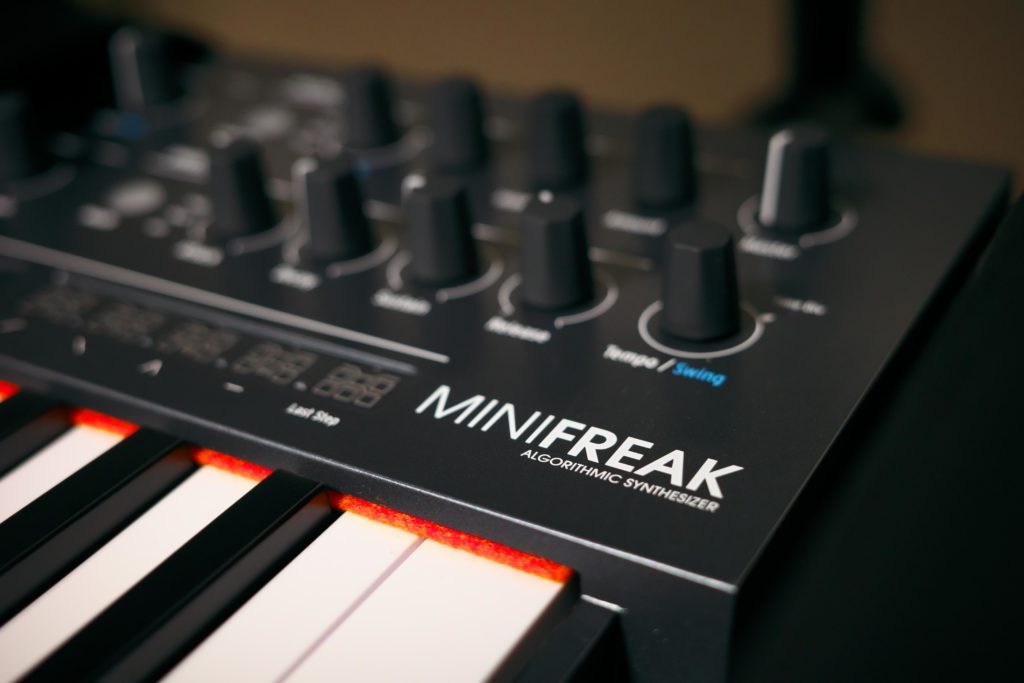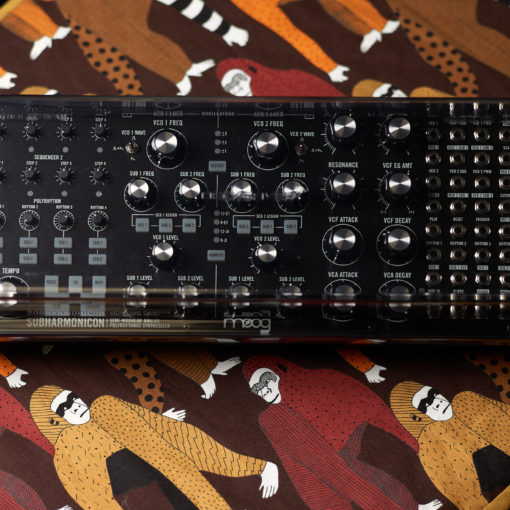
Arturia has always produced pretty awesome virtual instruments. They’re solid, beautifully lush, and polished sounding instruments with “the kitchen sink” full of features such as MPE, MIDI mapping, preset browsers and more. They are worthy of their price and the status in the industry. Minifreak has only been out for a month and really only in the hands of what appear to be Arturia’s network of product demonstration artists. Perhaps I am one of the few actual customers who has one, but regardless, I will try to be as forthcoming and honest about my experience with both the hardware, software, and Arturia themselves. Until a recent quality control issue with my AudioFuse 8pre’s hardware (my first with any Arturia Product), my experience with their support had been all but fantastic.
After a brief refresher of my past experiences with the company, an associate immediately changed gears and realized the experience wasn’t in alignment with the company’s standards and acted accordingly, to correct the issue. So fast in fact that it wasn’t even worth mentioning here, but I did because their customer service is admirable. Let the record show that I have no affiliation with Arturia whatsoever. They have never paid or given anything to me except exactly what I paid for, which was their products. That being said, I still think they’re one of the best companies out there, along with Sequential, LLC, Roger Linn Design, and Moog.

I didn’t even consider looking for firmware updates when I first plugged in the Minifreak (MF). It was so great out of the box that I didn’t consider it could get better. The hardware is flawless. Arturia opted for traditional plastic knobs that won’t get sticky over time in lieu of the “soft touch” knobs found on Microfreak and previous Brute model synths. Hopefully these knobs are here to stay.
In fact, I would like to meet the person who created that material. It first plagued me with my 2001 Volkswagen New Beetle; anyone who used lotion on their hands and made contact with the door handles would cause the soft touch coating to begin to peel off from the handles. It was a known issue that VW never resolved, likely assisting in the termination of the line all together. That was a beautiful car with a ton of design flaws— The Minifreak is not. Let’s see how the Minifreak V fares.

The firmware update went somewhat smoothly. My attempt to update the firmware within the plugin failed, so I needed to update manually— still from within the plugin though, so there was little complaint, on that front. Upon completion of the firmware update, the initial presets synchronization failed, causing me to force quit Live and restart, but all went without a hitch, on the second attempt. I honestly think this was Live’s fault but its not worth investigating. The firmware update didn’t crash and thats what counts.
The timber and tone differences between the hardware and software are near nonexistent. So much, that I had to turn the volume down on the hardware, to determine if I was listening to the software. 1:1 parity between hardware and plugins is what I expect from companies like Korg, Roland and Arturia (similar to Korg’s Wavestate and OPSIX plugin formats of their hardware synths). There are times when I need the sound and don’t want to haul the hardware. Or I am in “producer mode” and need the flexibility and power of software. The hardware however, should be just as capable as the software and vice versa. More options are always better, in today’s dynamic landscape.

The sound of the Minifreak is distinctly “analog,” to my ears. Perhaps it is the analog filter modeling or just mojo but this does not sound like a subsonic digital synth. For example, there are audible partials that I just don’t hear in other virtual instruments of this caliber. Put on a nice set of cans and spend a little time with the “Crusty” preset and you will see what I mean. I can feel a little of the CS-80V mojo in this instrument but with the tone and timber of the Microfreak – another one of my beloved “desert island” synthesizers. This is easily one of my best purchases in 2022. The wow factor of the Mini surpasses that of the Micro. It was worth the extra yen.
Even though this is a digital synth (engine), the filters are all analog and I think Arturia did a great job modeling them in the software. In fact, I would go so far as to say that what Arturia has pulled off in virtual instruments as of late is nothing short of magic. Owning the hardware and comparing the software side by side, I can honestly say this is the most non-virtual sounding virtual instrument I have on my system. In fact, the tone colors of Minifreak V are so complex that I had to check that I wasn’t listening to a combination of the plugin and the hardware playing in unison.
Minifreak V fully delivered when paired with an additional 51 keys (or more). The lows don’t get muddy and the highs aren’t shrill or thin. It’s the perfect balance of timbre and technology. I’m almost willing to say that the plugin outshines the hardware, which I have running through an Apollo x8p with Providence K-204 keyboard cables; the best of the best. As for the plugin interface I am glad Arturia didn’t go the skeuomorphic route. Very few plugin vendors pull this off well (Arturia being one of them) but even the best need to take a rest sometimes. Minifreak V feels a little like using a trimmed down version of Pigments (something I am dying to see in hardware form) and that too is no slouch.
That’s all for now – I would rather play than write about this wonderful instrument. There will be more posts and music (hopefully more of the latter) to come soon but for now I can comfortably recommend “biting the bulllet”, “pulling the trigger” or whatever slang you need to convince yourself (and your wife) that you’ve made the right decision. The Minifreak has a place in everyone’s studio. Even yours.
